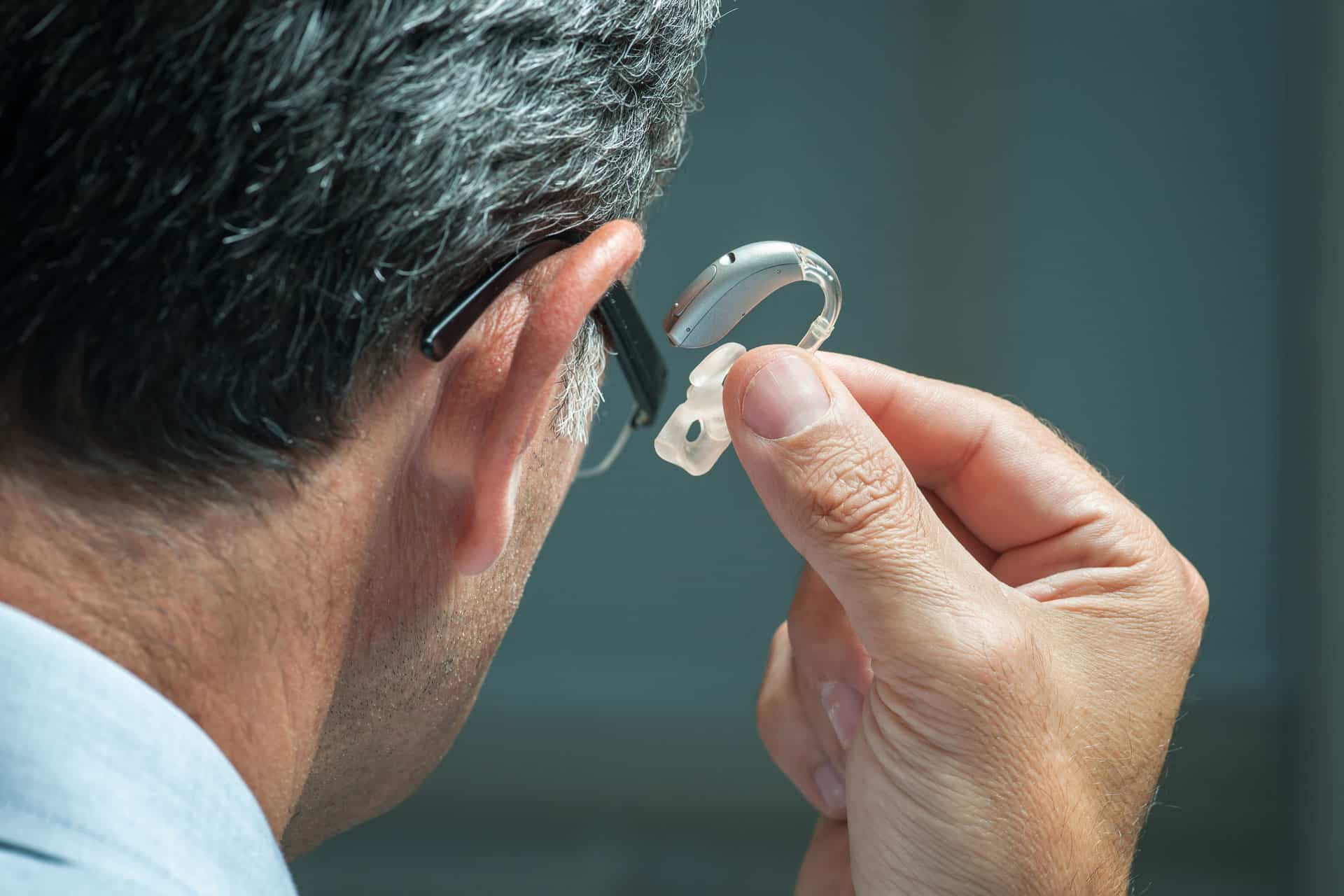Delivery in 2-3 working days
Communication with hearing impaired people
At a glance
Understanding hearing loss
Basics of communication with hearing impaired people
Practical tips for communicating with hearing impaired people
Mastering specific situations
Treating hearing impaired people with respect
Communicating with hearing impaired people: Common misunderstandings and how to avoid them
Conclusion
Understanding hearing loss
What is hearing loss?
Hearing loss occurs when the ability to hear is impaired. This can range from mild hearing loss, where only certain frequencies are affected, to almost complete deafness. Understanding this range is the first step to better understanding.
Effects of hearing loss
Not only the types of hearing loss, but also the consequences of hearing loss can be very different. One aspect that should not be underestimated is the emotional and social impact of hearing loss. People with hearing loss often struggle with isolation and misunderstandings, which can lead to frustration on both sides. If there is hearing loss in the family, this can also put a strain on family relationships. Communication is an essential part of family cohesion and if this is disrupted, it can lead to conflict and alienation. It is therefore important that those affected and their families are informed about the hearing loss and develop strategies together to communicate effectively.
Basics of communication with hearing impaired people
Facial access and lip reading
For many hearing-impaired people, lip-reading is an important aid to following conversations. Make sure that your face, and especially your lips, are well lit and avoid mumbling or covering your lips when speaking.
The role of hearing aids and other aids in communicating with hearing impaired people
Hearing aids are a window to the world of sound for many hearing impaired people and people with hearing problems or hearing impairment. They not only amplify the volume, but also improve the clarity of speech. Other aids for communicating with the hard of hearing or hearing systems such as TV sound amplifiers can make everyday life easier for the hard of hearing. Understand how you can use this technology to support conversations.
The importance of sign language
Sign language is a complete, natural language that is characterized by the visualization of hand movements, facial expressions and body posture. It enables hard of hearing and deaf people to interact and communicate in greater depth, going beyond the limits of the spoken word. For people who rely on sign language as their primary means of communication, it is important that those around them acquire at least a basic knowledge of the language. Have you ever thought about taking a sign language course?
Practical tips for communicating with hearing impaired people
- Conversation techniques and strategies: Speak at a moderate pace and articulate clearly. Simple adjustments in the way you formulate sentences can make a big difference.
- Avoid jargon and complicated sentence structures: keep the conversation simple and clear so that your words are easier to understand.
- Give context: Start a new topic with a clear announcement to involve the other person.
- Use pauses: speak slowly and clearly and give people with hearing loss time to process what you have said before continuing.
Adaptation of the environment
The environment plays a major role in communicating with hearing impaired people. Here are some adaptations that can help:
- Reduce background noise: Turn off the music or TV and look for suitable, quiet places to talk.
- Improve the lighting: Good lighting is important so that the hearing-impaired person can recognize facial expressions and, if necessary, read lips better.
- Sit at the right angle: sit so that your face is always clearly visible.
Gestures, facial expressions and non-verbal communication with hearing impaired people
Non-verbal signals can significantly support communication with hearing impaired people. Try the following:
- Use gestures sensibly: Use hand gestures to emphasize your statements and make them clearer.
- Pay attention to your facial expressions: Facial expressions can convey emotions and intentions that words cannot always capture.
- Look at the person you are talking to: Eye contact signals attention and promotes mutual understanding.
Use of supporting technology
Advances in technology have led to significant improvements in support for the hearing impaired. Modern aids make it possible to overcome many of the hurdles associated with hearing loss:
- FM systems: These special wireless devices improve the acoustic environment by transmitting the speaker's voice directly to the hearing aid wearer. They are particularly useful in noisy environments or where there is a distance between the speaker and the listener.
- Written language mediation: Apps and devices that convert spoken words into text offer the possibility of following conversations in real time and can be used both on personal mobile devices and as permanently installed systems in public facilities or at events.
- TV hearing amplifier: Watching TV without additional aids can be a challenge for the hearing impaired, as dialog is often overlaid by background noise. TV hearing amplifiers such as the OSKAR from faller audio offer an efficient solution here. Thanks to special speech optimization, background noise is filtered out so that you can understand the dialogue better again.
Communication training for hearing people
To avoid misunderstandings, hearing people should train their communication skills, for example with the help of
- Workshops and training courses: Take part in training courses to learn how to communicate effectively with the hard of hearing and deaf.
- Role play: Practice everyday situations to develop sensitivity and understanding.
Mastering specific situations
Communication with hearing impaired people in a professional environment
Clear communication is particularly important in the workplace. To facilitate this, they pay attention, for example, to
- technical adaptations: Ensure that meeting rooms are equipped with the necessary technology for people with hearing impairments.
- Information policy: Make sure that all important information is recorded in writing.
Social interactions with hearing impaired people
There are also ways to facilitate communication in social interaction, for example through the
- Planning meetings: Choose places that are suitable for the hard of hearing or deaf.
- Raise awareness among those around you: Educate friends and family on best communication practices.
Treating hearing impaired people with respect
Empathy and patience
Empathy is not just a word, it is the key to every person's heart and mind. Show understanding for the challenges that people with hearing loss face on a daily basis. Practicing patience does not mean refraining from speaking, but giving the person you are talking to enough time to understand and respond.
Avoidance of discrimination
Discrimination often starts with ignorance. Educate yourself about hearing loss and share your knowledge with others. Stand up for equal treatment of people with hearing loss at work and in public life.
Communicating with hearing impaired people: Common misunderstandings and how to avoid them
Clarity instead of volume
Louder is not always better. Many hearing impaired people benefit more from clear pronunciation and less from increased volume. It's like a blurred picture - speaking louder doesn't make the contours any clearer.
Asking the right questions
If you are not sure whether the other person has understood you, ask! This shows interest and a willingness to communicate. But ask politely and intelligently, for example by rephrasing your question instead of simply repeating it.
Conclusion:
From clear speech and the right environment to technical aids, there are many ways in which communication with hearing impaired people can be made easier or improved. One thing counts above all: your commitment! And always remember that the best communication is based on respect and the will to understand.



